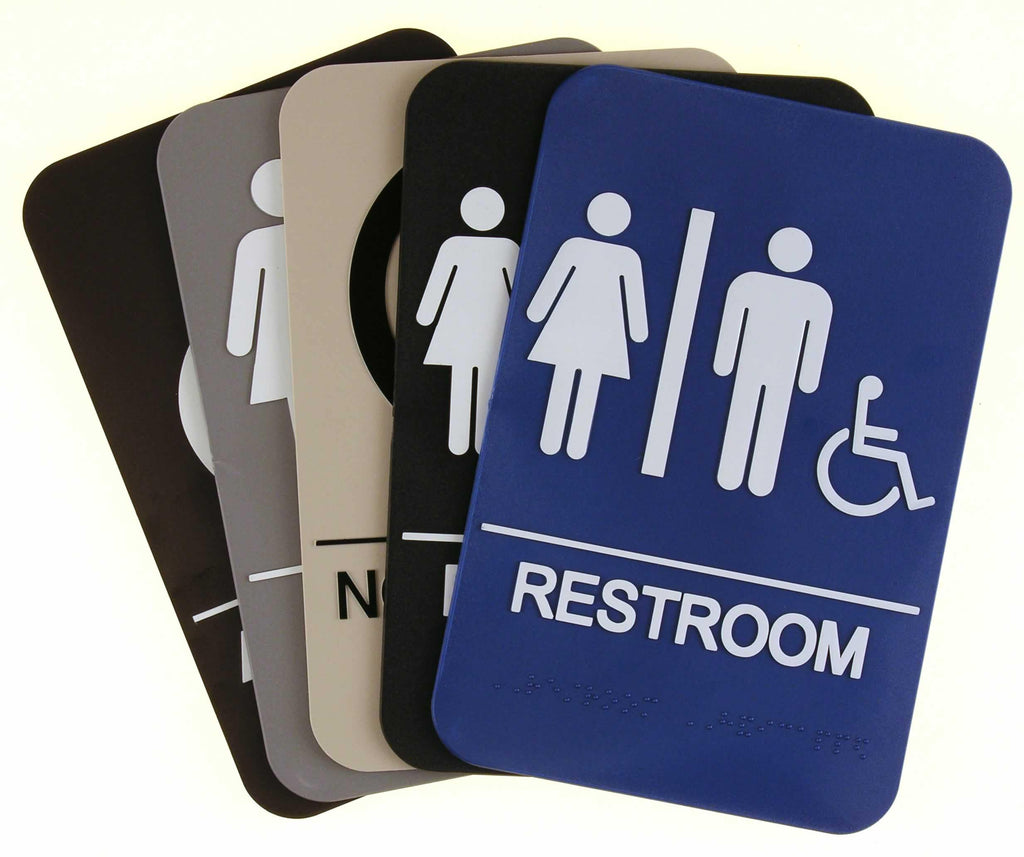A Comprehensive Guide to Selecting the Right ADA Signs
A Comprehensive Guide to Selecting the Right ADA Signs
Blog Article
Discovering the Key Attributes of ADA Signs for Boosted Availability
In the world of accessibility, ADA indicators serve as silent yet effective allies, making sure that rooms are comprehensive and navigable for people with specials needs. By integrating Braille and tactile components, these indications damage barriers for the visually damaged, while high-contrast shade schemes and readable typefaces cater to diverse visual demands.
Significance of ADA Conformity
Ensuring compliance with the Americans with Disabilities Act (ADA) is important for fostering inclusivity and equal gain access to in public areas and work environments. The ADA, established in 1990, mandates that all public facilities, employers, and transport solutions suit people with impairments, guaranteeing they appreciate the same rights and opportunities as others. Conformity with ADA criteria not just fulfills legal obligations however likewise boosts a company's online reputation by showing its commitment to diversity and inclusivity.
One of the key facets of ADA conformity is the application of available signage. ADA signs are made to make certain that individuals with impairments can quickly navigate via buildings and spaces.
Additionally, adhering to ADA laws can alleviate the risk of legal repercussions and possible fines. Organizations that stop working to abide by ADA standards might deal with penalties or legal actions, which can be both destructive and financially challenging to their public picture. Hence, ADA conformity is integral to cultivating an equitable atmosphere for everybody.
Braille and Tactile Aspects
The consolidation of Braille and responsive components right into ADA signs symbolizes the concepts of access and inclusivity. It is generally put underneath the matching message on signs to make sure that people can access the information without aesthetic aid.
Tactile components prolong past Braille and consist of increased characters and symbols. These parts are made to be noticeable by touch, enabling individuals to recognize area numbers, washrooms, departures, and other important locations. The ADA establishes particular guidelines regarding the dimension, spacing, and placement of these tactile elements to maximize readability and make certain uniformity across different settings.

High-Contrast Color Design
High-contrast color pattern play an essential role in enhancing the presence and readability of ADA signage for people with visual problems. These schemes are essential as they take full advantage of the difference in light reflectance between message and background, guaranteeing that indicators are quickly noticeable, even from a range. The Americans with Disabilities Act (ADA) mandates using details color contrasts to suit those with limited vision, making it a crucial element of conformity.
The effectiveness of high-contrast shades hinges on their capability to stand out in various lighting conditions, consisting of dimly lit atmospheres and locations with glow. Usually, dark message on a light background or light text on a dark history is employed to achieve optimum contrast. As an example, black message on a white or yellow background gives a stark visual distinction that assists in quick recognition and understanding.

Legible Fonts and Text Size
When considering the layout of ADA signs, the choice of clear fonts and appropriate message dimension can not be overstated. The Americans with Disabilities Act (ADA) mandates that fonts must be sans-serif and not italic, oblique, manuscript, extremely ornamental, or of unusual form.
According to ADA guidelines, the minimal text elevation must be 5/8 inch, and it should boost proportionally with seeing range. Consistency in message size adds to a cohesive visual experience, assisting individuals in browsing environments efficiently.
Moreover, spacing between lines and letters is essential to readability. Sufficient spacing prevents characters from showing up crowded, enhancing readability. By sticking to these criteria, designers can significantly improve accessibility, making sure that signs serves its designated objective for all people, despite their aesthetic capabilities.
Efficient Positioning Strategies
Strategic placement of ADA signs is essential for maximizing availability and making certain compliance with lawful requirements. Effectively positioned signs assist people with disabilities effectively, helping with navigating in public rooms. Trick factors to consider include elevation, exposure, and distance. ADA guidelines state that signs must be placed at an elevation in between 48 to 60 inches from the ground to guarantee they are within the line of view for both standing and seated individuals. This conventional elevation array is essential for inclusivity, making it possible for mobility device customers and people of differing heights to access info effortlessly.
Additionally, indicators should be positioned nearby to the latch side of doors to enable easy recognition before access. Consistency in indicator positioning throughout a center enhances predictability, minimizing confusion and enhancing overall customer experience.

Final Thought
ADA indications play a crucial duty in advertising access by incorporating attributes that resolve the demands of individuals with impairments. These aspects collectively foster an inclusive setting, emphasizing the importance of ADA compliance in ensuring equivalent accessibility for all.
In this hyperlink the world of availability, ADA indications offer as quiet yet powerful allies, guaranteeing that spaces are accessible and comprehensive for people with specials needs. The ADA, passed in 1990, mandates that all public facilities, companies, and transportation solutions fit individuals with disabilities, guaranteeing they take pleasure in the exact same rights and opportunities as others. ADA Signs. ADA indicators are developed to make sure that people with handicaps can quickly navigate via buildings and spaces. ADA guidelines specify that indications need to be mounted at an elevation in between 48 you can check here to 60 inches from the ground to guarantee they are within the line of view for both standing and seated people.ADA signs play an essential function in advertising availability by integrating attributes that deal with the demands of individuals with handicaps
Report this page